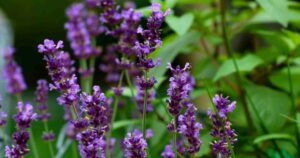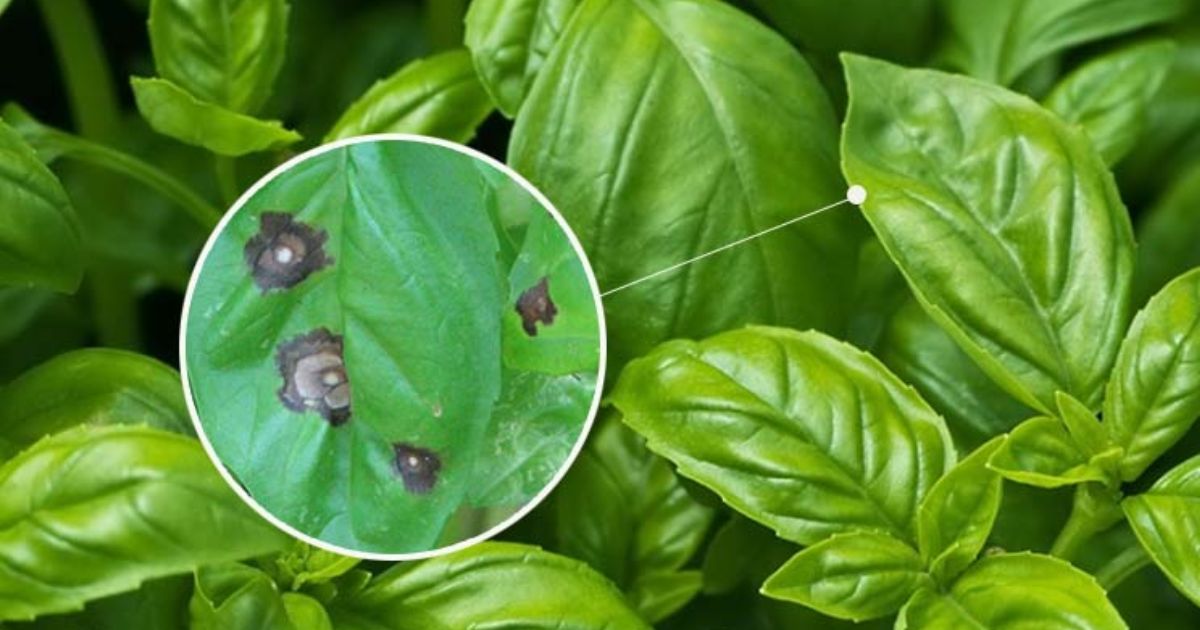Deer may be beautiful creatures, but they can quickly become a gardener’s worst enemy, munching their way through carefully cultivated plants. If you’re tired of watching your garden get ravaged by these unwanted visitors, it’s time to consider deer-resistant plants. These plants were picked especially because of their capacity to deter deer, thanks to unique characteristics like strong scents, tough textures, or unpalatable tastes. But choosing the right plants goes beyond a one-size-fits-all solution; you need to select the right varieties for each season to ensure year-round protection and beauty in your garden.
In this guide, we’ll explore how to choose deer-resistant plants for every season, offering options that thrive and defend your garden from spring through winter. Whether planting fragrant flowers in the spring or hardy evergreens in winter, you can design a garden that remains untouched by hungry deer while maintaining vibrant color and texture all year. Let’s dive into the key characteristics of deer-resistant plants and discover the best selections for every season.
Why Choose Deer Resistant Plants?
Deer-resistant plants are a smart choice for gardeners, especially those living where deer frequently roam. These plants are specifically chosen because they deter deer from grazing, thanks to their unique characteristics like tough leaves, strong scents, or mildly toxic properties. This makes them less appealing to deer, protecting without having to worry about breaking it all the time. For gardeners who have dealt with the frustration of deer devouring their flowers and shrubs, incorporating deer-resistant plants offers a natural solution that helps maintain their outdoor space’s integrity and attractiveness.
In addition to their practical benefits, plants are an environmentally friendly choice. By planting varieties that naturally repel deer, you’ll reduce your reliance on chemical deer repellents, which can harm other wildlife and disrupt the local ecosystem. Since resistant plants are more likely to survive a hungry herd, you’ll also spend less time and money replacing damaged plants, making your garden more sustainable in the long run. Moreover, a healthier, more balanced ecosystem is supported when you rely on these plants, as they work harmoniously with local flora and fauna. Choosing deer-resistant plants is a practical solution for deer problems and a responsible approach to deer resistant climbing roses.
What Plants Do Deer Dislike

Characteristics of Deer Resistant Plants
Impatiens deer resistant possess distinct traits that make them unappealing to deer, helping to safeguard your garden from unwanted grazing. One of the most common characteristics is tough or coarse textures, which make these plants difficult for deer to chew or digest. Plants with fuzzy or prickly leaves, like lamb’s ear or holly, deter deer due to the uncomfortable experience of eating them. Additionally, many deer-resistant plants have strong fragrances that overwhelm a deer’s sensitive sense of smell. Herbs that deer won’t eat like lavender, rosemary, sage, and fragrant flowers like marigolds are great examples of plants that repel deer with their powerful aromas.
Some deer-resistant plants also contain mildly toxic properties or unpleasant tastes that make deer avoid them altogether. For instance, plants like foxglove and daffodils are known for their toxicity, which discourages deer from grazing. These traits allow gardeners to maintain vibrant and thriving landscapes without the constant threat of destruction.
Seasonal differences also play a role in the effectiveness of deer-resistant plants. In the summer, fragrant flowers and herbs that deer won’t eat like lavender and marigolds are especially effective, as their strong scents are more potent in the heat, naturally repelling deer. During the colder months, evergreen plants such as boxwood, juniper, and spruce provide year-round protection, as their tough, leathery leaves are less appealing to deer searching for food in winter. You can keep your garden protected throughout the year by selecting do deer eat vinca vine plants with the right characteristics for each season.
Choosing Deer Resistant Plants for Each Season
1. Spring Deer Resistant Plants
In spring, deer are often on the lookout for fresh vegetation after the harsh winter months. However, several early bloomers are both colorful gladiolus and deer. Daffodils are an excellent spring choice, known for their toxic properties that make them unappealing to deer. Similarly, lavender, with its pungent fragrance and bleeding hearts, with their delicate appearance but bitter taste, is perfect for deterring hungry deer while adding beauty to your garden.
Example:
“In spring, deer are often hungry after winter, but plants like daffodils and lavender, with their pungent scents, will keep them at bay while adding color to your garden.”
2. Summer Deer Resistant Plants
As summer heats up, choosing deer plants that can handle high temperatures and are unattractive to deer becomes essential. Marigolds, yarrow, and Russian sage are all excellent choices for summer. These plants are heat and drought-tolerant, but their strong aromas make them less appealing to deer. In addition, their hardiness ensures they stay resilient against the weather and potential grazing.
Example:
“For the hot summer months, deer-resistant plants like yarrow and Russian sage thrive in the heat while keeping deer away with their strong aromas.”
3. Fall Deer Resistant Plants
In fall, deer become more aggressive in their feeding habits, trying to bulk up for the winter ahead. This is the season to focus on late bloomers and tough-textured plants. Black-eyed Susans, asters, and ornamental grasses are great fall options. Their rough textures and durability make them less appetizing to deer, while their autumnal colors keep your garden looking vibrant.
Example:
“As fall approaches, deer look for extra food to prepare for winter, but tough plants like black-eyed Susans and asters are great for standing up to their feeding habits.”
4. Winter Deer Resistant Plants
Even in winter, your garden can remain protected with the help of evergreen plants. Boxwood, holly, and juniper are perfect choices for year-round deer resistance. These evergreens offer tough, leathery leaves that deer typically avoid, and they provide structure and color to your garden during the colder months when other plants have died back.
Example:
“Even during the cold winter months, deer-resistant evergreens like juniper and boxwood will keep your garden intact with their hardy, unappetizing leaves.”
Tips for Successfully Growing Deer Resistant Plants

- Location matters: To maximize deer resistance, plant deer-resistant species near entry points or along the perimeter of your garden. This creates a natural barrier and makes it harder for deer to access more vulnerable plants.
- Combine plant varieties: Mix different plants with deterrent characteristics, such as strong scents, tough textures, and mildly toxic properties. This combination will strengthen your garden’s defenses and ensure year-round protection.
- Care and maintenance: Pay attention to seasonal care requirements to keep your resistant plants healthy. Watering during dry periods, pruning for shape, and fertilizing can help them thrive and maintain resilience.
Example:
“Strategically placing deer-resistant plants near vulnerable garden areas, such as entry points, can help create a natural barrier. Combining different varieties that deter deer in multiple ways—through scent, texture, and toxicity—will give your garden the best protection.”
Conclusion
Choosing deer-resistant plants for every season is a strategic way to protect your garden while maintaining its beauty year-round. By selecting tough-textured, aromatic, or unpalatable plants to deer, you can enjoy vibrant blooms in the spring, drought-tolerant perennials in the summer, hardy plants in the fall, and evergreen protection in the winter. Each season offers a unique opportunity to blend aesthetics with practicality, ensuring your garden remains colorful and deer-free throughout the year.
As you plan your garden, remember that variety is key. Mixing plants with different textures, fragrances, and bloom seasons not only enhances the overall appeal of your landscape but also strengthens its natural defenses against deer. By understanding the traits that repel deer and choosing plants suited to each season, you’ll create a thriving, resilient garden that stands strong no matter what time of year.
FAQs:
1. What are deer-resistant plants?
Deer-resistant plants are species that deer typically avoid due to their unappealing characteristics, such as tough textures, strong fragrances, or mildly toxic properties.
2. Can deer-resistant plants completely prevent deer from entering my garden?
While deer-resistant plants can significantly reduce deer activity, no plant is 100% deer-proof. In food scarcity, deer may nibble on even the least appealing plants.
3. Which plants are best for keeping deer away in spring?
Spring plants like daffodils, lavender, and bleeding hearts are excellent choices. Their strong scents and unpalatable taste make them less likely to be eaten by deer.
4. What are some good summer deer-resistant plants?
Heat-tolerant plants such as marigolds, yarrow, and Russian sage work well in summer. They thrive in hot conditions and repel deer with their pungent fragrances.
5. How can I protect my garden when deer feed more in the fall?
Opt for tough-textured plants like black-eyed Susans, asters, and ornamental grasses in the fall. These plants are durable and less appetizing to deer preparing for winter.





